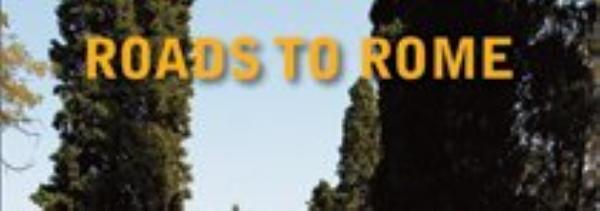But what is it, my Fathers, my Brothers, what is it that has happened in England just at this time? Something strange is passing over this land, by the very surprise, by the very commotion, which it excites. Were we not near enough the scene of action to be able to say what is going on, – were we the inhabitants of some sister planet possessed of a more perfect mechanism than this earth has discovered for surveying the transaction of another globe, – and did we turn our eyes thence towards England just at this season, we should be arrested by a political phenomenon as wonderful as any which the astronomer notes down from his physical field of view. It would be the occurrence of a national commotion, almost without parallel, more violent than has happened here for centuries, – at least in the judgments and intentions of men, if not in act and deed. We should note it down, that soon after St. Michael's day, 1850, a storm arose in the moral world, so furious as to demand some great explanation, and to rouse in us an intense desire to gain it. We should observe it increasing from day to day, and spreading from place to place, without remission, almost without lull, up to this very hour, when perhaps it threatens worse still, or at least gives no sure prospect of alleviation.
John Henry Newman explained this phenomenon:
This, then, is the cause of this national transport, this national cry, which encompasses us. The past has returned, the dead lives. Thrones are overturned, and are never restored; States live and die, and then are matter only for history. Babylon was great, and Tyre, and Egypt, and Nineve, and shall never be great again. The English Church was, and the English Church was not, and the English Church is once again. This the portent, worthy of a cry. It is the coming of a Second Spring; it is a restoration in the moral world, such as that which yearly takes place in the physical. (Newman, Sermon on the Second Spring, preached 13 July 1852, in St Mary’s, Oscott)
Victorian Catholicism basked in the energising sun of a ‘second spring’. Newman heralded the dawn of a new era after Catholic Emancipation (1829) and the re-establishment of a Catholic hierarchy (1850) restored to Catholics, villainised and marginalised for three hundred years, respectability, national identity and, for the most part, their proper role in society. W. Gordon Gorman documented Catholic success in “Rome’s Recruits”: a List of Protestants who have become Catholics since the Tractarian Movement (London, 1878). Subsequent editions appeared periodically, the last being in 1910. In a letter to the editor in The Universe (25 January 1924), Gorman announced a new edition as ‘almost ready for the press’: it never appeared and the papers were subsequently lost. Gorman had mistakenly included a peer of the realm in an earlier edition and the consequent litigation seems to have weakened his health and undermined his confidence.
In the late 1980s one occasionally heard reference to a ‘third spring’ as numerous Anglicans deserted the Established Church for the Church of Rome. Many explained, sometimes at some length, that issues such as the ordination of women occasioned not caused their ‘conversion’. Is it global warming? Or have we in fact entered a ‘third spring’? If the latter, John Beaumont assumes the Gorman role.
A legal consultant and a freelance writer, Beaumont became a Roman Catholic in 1980. In 2005, he compiled Converts to Rome: A Guide to Notable Converts from Britain and Ireland during the Twentieth Century. Three other works, Converts from Britain and Ireland in the Nineteenth Century, Jewish Converts and Early Converts, followed in 2007 and 2008. Roads to Rome presumably gathers into one volume what had been dispersed in the preceding four. The noted Benedictine physicist, Stanley L. Jaki, who found time in the midst of his philosophical and scientific research to study Newman, especially his relations with converts, and the almost woeful state of the contemporary Church, introduced the earlier volumes. Presumably only his death in 2009 prevented him from composing something for Roads to Rome. Instead Beaumont secured the services of two other recent converts: Marcus Grodi, host of EWTN’s The Journey Home, president of the Coming Home Network International and principal author of Journeys Home, wrote the foreword; and Joseph Pearce (who has an interesting entry in the book under review), editor of Saint Austin Review, author of many literary biographies including the incredible, The Quest for Shakespeare and writer-in-residence at Ave Maria University in Florida, composed the introduction.
In his introduction to the original Converts to Rome, published as an appendix to this volume, Dom Stanley connects Beaumont’s efforts with Gorman’s and considers the former a revival of ‘a most praiseworthy enterprise which came to an end shortly before World War I’ (p. 473). Without Gorman, Beaumont’s task would have been much harder so it is surprising that Beaumont does not acknowledge his debt to Gorman in the preface. Beaumont improves on Gorman’s bare-bone biographical details by including numerous autobiographical explanations of the motives for the conversion.
Samuel Johnson quipped in 1768:
A man who is converted from protestantism to popery may be sincere; he parts with nothing: he is only superadding to what he already had. But a convert from popery to protestantism gives up so much of what he has held as sacred as any thing that he retains; there is so much laceration of mind in such a conversion, that it can hardly be sincere and lasting.
What have our converts gained? We learn that Lord Alfred Douglas (‘Bosie’) explains: ‘What finally converted me to Catholicism, though I did not actually become a Catholic till more than a year after I read it, was Pope Pius X’s Encyclical Against Modernism . . . It had the effect of convincing me that the Catholic Church in communion with the See of Peter in Rome, is the only true Church’ (p. 120). John Gummer grew dissatisfied with the Church of England because of its assertion ‘that it can alter doctrine and order unilaterally [and in so doing] . . . has relinquished its apostolic claim to the allegiance of the people of England’. An awareness of the necessity of the universal authority of the pope prompted Anthony Symondson SJ to leave the Church of England (p. 414); the recognition of a need for authority motivated Graham Leonard, sometime Bishop of London (p. 250). We do not know what motivated Diana Dors (p. 120). Were Kenneth Noakes, patristic scholar, Colin Amery, architectural writer and adviser to the Prince of Wales, Andrew Sanders, Professor of English at Durham University, Margaret, Duchess of Argyle, Ralph Townsend, Headmaster of Winchester College, and Michael Seed (or is it more appropriate to consider Seed a recovered Catholic because he was baptised one?) omitted out of ignorance or for other motives? Beaumont, like Gorman, excludes a reference to himself.
Unfortunately Beaumont does not provide us with any statistics. Gorman, however, gives figures for the number of converts from different universities, different churches, and different professions: one learns that 470 authors became Catholic but only 14 actors. Of the 243 converts who became religious priests, 109 became Jesuits. Ranked second at 32 were the Dominicans. Why would so many converts choose the Catholic order most feared and despised by Protestants? One wonders how the importation of so many ex-Protestants affected the state and style of the province.
Roads to Rome’s triumphalism is much louder than Gorman’s. Beaumont, Jaki, Grodi and Pearce share a strong interest in converts and the importance of conversion. For them it is a ‘coming home’ to the true Church. Dom Stanley lamented that talk about conversion did ‘not resonate well in our new-fangled ecumenical or often ‘ecumaniacal’ atmosphere’ (p. 473). But, as the Benedictine explains in a different introduction, ‘converts have never petered out, only some progressive ecclesiologists thought it possible to downplay their importance’ (p. 482). Is Beaumont using a concern for conversions and converts to critique current ecclesiastical practices? Beaumont highlights the dissatisfaction of converts such as Evelyn Waugh and Alec Guinness with the post-Vatican II Church (pp. 179, 443) but passes over in silence converts, such as the former editor of The Tablet, John Wilkins, who rejoiced in post-conciliar developments. But thankfully one need not accept Beaumont’s ecclesiological and apologetical perspective to appreciate the work he has done. This is a valuable and useful resource even for those who prefer the autumn.
The reviewer, Thomas M McCoog SJ is the archivist for the British Province of the Society of Jesus.
![]() Find this book on the Saint Augustine’s Press web site
Find this book on the Saint Augustine’s Press web site
![]() Shop for this book on Amazon, giving a 5% cut to the Jesuit Refugee Service, UK
Shop for this book on Amazon, giving a 5% cut to the Jesuit Refugee Service, UK






